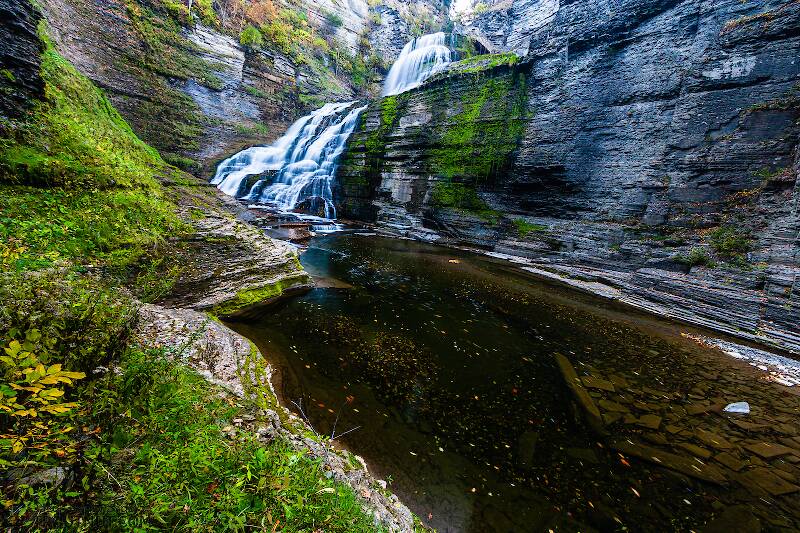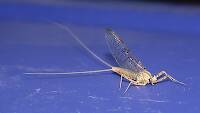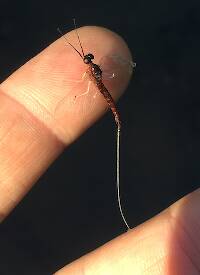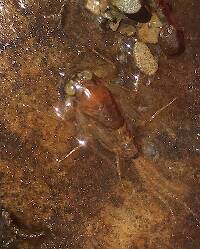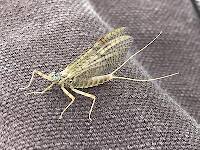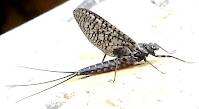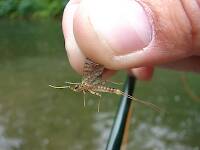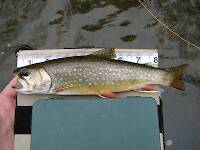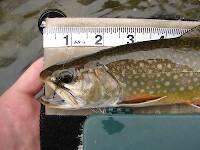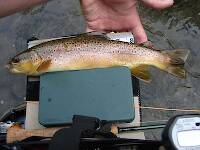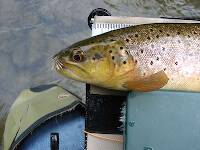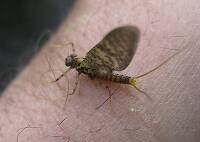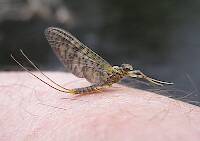
Hex Mayflies
Hexagenia limbata
The famous nocturnal Hex hatch of the Midwest (and a few other lucky locations) stirs to the surface mythically large brown trout that only touch streamers for the rest of the year.
Featured on the forum

Troutnut is a project started in 2003 by salmonid ecologist Jason "Troutnut" Neuswanger to help anglers and
fly tyers unabashedly embrace the entomological side of the sport. Learn more about Troutnut or
support the project for an enhanced experience here.
Wiflyfisher has attached this picture to aid in identification. The message is below.
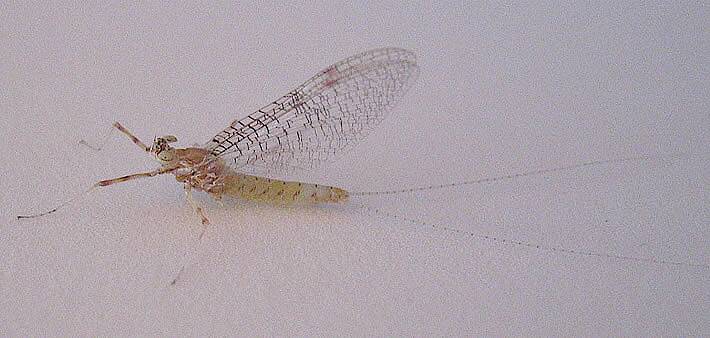
Wiflyfisher on Jul 12, 2008July 12th, 2008, 10:30 am EDT
I know this is probably a late season spinner, but I am not sure which Heptageniidae genus and species this would be?
John S.
https://WiFlyFisher.com
https://WiFlyFisher.com
GONZO on Jul 12, 2008July 12th, 2008, 10:58 am EDT
John,
It might be Stenonema femoratum, the last remaining North American species in that genus after the others were moved into Maccaffertium. It's hard to say anything really definitive about many Light Cahill/Cream Cahill females because so many of them haven't been associated in a conclusive way. The things that suggest femoratum are the crowded cross-veins near the bulla region of the forewing and the markings on the back (tergites). Still, some of the Maccaffertium also have crowded cross-veins, and I can't see enough of the back markings to be sure they match. (In femoratum, the markings are described as a central dot with a dash on either side of it.)
It might be Stenonema femoratum, the last remaining North American species in that genus after the others were moved into Maccaffertium. It's hard to say anything really definitive about many Light Cahill/Cream Cahill females because so many of them haven't been associated in a conclusive way. The things that suggest femoratum are the crowded cross-veins near the bulla region of the forewing and the markings on the back (tergites). Still, some of the Maccaffertium also have crowded cross-veins, and I can't see enough of the back markings to be sure they match. (In femoratum, the markings are described as a central dot with a dash on either side of it.)
Wiflyfisher on Jul 14, 2008July 14th, 2008, 1:37 pm EDT
the last remaining North American species
May Stenonema remain forever in the halls of Mayfly entomology! :)
Gonzo, thanks! If I get a some free time (and I can find it) I will try to post a closer shot that I took.
John S.
https://WiFlyFisher.com
https://WiFlyFisher.com
Quick Reply
Related Discussions
Topic
Replies
Last Reply
3
Jun 27, 2018
by Konchu
by Konchu
13
Jun 13, 2012
by Brookyman
by Brookyman
2
May 20, 2007
by Troutnut
by Troutnut
Re: Anybody know more about Maccaffertium terminatum?
In the Mayfly Species Stenonema terminatum by Troutnut
In the Mayfly Species Stenonema terminatum by Troutnut
3
Jun 11, 2007
by Konchu
by Konchu
5
May 20, 2009
by GONZO
by GONZO

